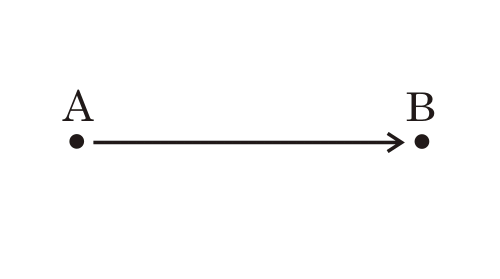|
LITR 4632: Literature of the Future  |
Student Midterms 2013 Sample Student Submission
|
 |
Elizabeth L. Suffron
Essay 1
20 June 2013
Change:
The Never-Ending Story
One man’s trash is another man’s treasure, or so
the idiom goes. The same can be said of literature...not trash, however, for we
all know the written word holds endless treasure. Rather, the comparison of
realities within a textual setting reveals a continuous cycle of contrasting
visions and scenarios. From alien contact and off planet adventures to societies
engrossed in advancing technology while another fights for survival in rough
environments, stark extremes push literary plots forward in the quest for
change. Either through decline or progress, a main character or people rise up,
bound by ideals and desire, forging paths to a “better place.” Yet, more than
living conditions, the frame of mind plays a demanding role in such uprisings.
Values set the tone, revealing motives that turn to ideas, and ideas into action
leading characters along a journey of liberation. Still, is there peace in the
end? Does the cycle cease? If one man’s utopia is another man’s dystopia—just
like the trash and treasure—is a “better place” obtainable? Fantasies such as
The Parable of the Sower, Time Machine, and Stone Lives suggest, not a linear
line of progress, but a cycle of ongoing change. The only exception to this rule
is the book of Revelation. This text presents the final battle between sinners
where, by the second coming of Christ, God’s reign is established. Those whose
faith is pure live forever with God while those opposing His truth are cast into
the pit for all eternity. Therefore, unless a Revelation-type apocalypse takes
place, change is not only inevitable, it is a never ending cycle.
When it comes to the idea of change, either through
evolution or apocalyptic forces, one must first identify the need of
change. Conflict provides the greatest tool for such methods, giving the reader
“an event or sequence of expectations,” flooding the black and white pages with
purpose (White, online). Some plots automatically thrust the reader into a world
of dysfunction as in Stone Lives, where people willingly risk life for money
while others lack for nothing. Opening with “Odors boil around the Immigration
Office,” readers automatically experience a place of foul sights and smell (SL,
178). Known as the “Bungle,” Stone’s existence is synonymous with strife as he
fights for the basic necessities of food and water. In others, like Parable of
the Sower, memories of a “better time” hold no hope for improvement. Violence is
a way of life as neighbor attacks neighbor and the thought of loving others is
drowned out by the need to survive. As daughter of a Baptist Minister, Lauren
lives in an already troubling time that worsens dramatically with each turn of
the page. Traveling north, journaling along the way, she jots down the only seen
truth: God is change. Both
character’s reality, in their own way, develop a connection between fantasy and
“the real world,” through the thread of suffering. So, by producing a shared
humanistic quality of sympathy and/or empathy we see, from the very beginning, a
need for change.
While the demand for altering a community or
society may be apparent, there’s another form of transformation used to build
upon the need of change. This tool comes in the form of a journey or quest.
Embarking on a voyage, readers, through characters, are met with
conviction-challenging episodes. No longer exists the dichotomy between good and
evil but, rather, the evolutionary adaptation of survival. Therefore,
questioning perceptions provides the second greatest element when seeking to
understand the need for change. The Time Machine interprets this strategy well
by incorporating the method of telling a story within a story, or framing.
Traveling to the year 802,701 AD, the time traveler encounters the Eloi, a race
of light skinned people possessing childlike characterisitcs. Deeming these
“very beautiful” inhabitants harmless, our traveler assesses the surroundings
and concludes all to be the fruits of communism (Wells, 28). However, his
initial perception of reality is found wanting as he comes upon ventilation
wells propelling new thoughts and questions concerning the Eloi. Instead of “an
automatic civilization and a decadent humanity,” perhaps another explanation
exists (Wells, 53). Further investigation of these tunnels spurs a reformation
of logical ideas in which an “artificial underworld...was necessary to the
comfort of the daylight race” (Wells, 61). Thus, perceptual extremes continue
for our hero as he strives to make sense of this “Golden Age” world. Here is
where evolution is clearly seen by way of adapting to one's environment,
creating “endless possibilities of our ever expanding world” (Paula Upham,
2007). Thereby greying the areas of good and evil, interpretation of needed
change is left to each individual.
Interpreting a shift in realities presents many
possibilities, but the final change is one that cannot be undone. When
possibilities are endless, stories have no end. Recalling the texts mentioned
thus far, we can see how each conclusion gives way to more questions than
answers. While the characters experience an apocalyptic “ending” of sorts,
doesn’t mean a utopia is established. Rather, each transcend to a new reality
where “endless possibilities” continue to exist. From Lauren to Stone to the
Time Traveler, while espousing ideals for a new world/life, are not removed from
the turmoil of pain and strife. In the book of Revelation, however, counters
worldly strength and weakness through God the Creator, the “Alpha and Omega, the
first and last, the beginning and the end” (ESV, Revelation 22:13). Such an
important detail should not be overlooked. In our other literary tellings, while
heroic and inspiring, rely on human nature to guide steps and procure change.
God does not possess such flaws as He is perfect, therefore, only His truth can
prevail. Perceptions in Revelation remain black and white, not grey. The
finality of this one and only apocalypse is firmly stated by God saying, “It is
done!” (ESV, Revelation 21:6), successfully ending the cycle of change.
Returning to a secular sense of evolutionary and apocalyptic change, there will always be a need for such outcomes. Whether through a society suppressed by a tyrannical government or advances in technology creating an information dependent people, individuals need progress in order to keep balance. Wells’ understanding of creation and evolution is that “Strength is the outcome of need; ...Under new conditions of perfect comfort and security, that restless energy, that with us is strength, would become weakness” (Wells, 39,41). With this in mind, can change ever cease in which perfection is found? Simple. The answer is no because change is inevitable, a never ending cycle...until God creates the new world.
Essay 2
All Roads Lead to the Bible
It’s the greatest story ever told! That is
certainly true, and it is the most used story of all. From Harry Potter to the
Hunger Games, the Bible is reflected in much literature. Why is that? Is it
really the greatest story every told? If so, what elements attribute to it’s
success? These are questions guiding a close analysis of Biblical cross-overs
into the secular...even those rejecting faith in Christ. Whether in a battle of
good and evil or a maiden in need of rescue, essential biblical foundations can
be found in each tale.
Reviewing literary texts covered thus far in class,
we can narrow down key points revealing a spiritual nature within the stories.
The Parable of the Sower, aptly titled, seeks truth in a dangerous society which
long forgot what it means to love one another. Paralleling the story of Job
found in the Old Testament, our main character, Lauren, struggles with loss of
hope and trust in humanity. A crucial difference between the two stories
manifest in Job’s dedication to God in the midst of hardships while Lauren
rejects God in favor of a faith all her own. Evil in her story is seen
individually as well as in the systems created to protect and provide for the
people. Human depravity exists on such a large scale that the only solution is
found through a savior. Therefore, the story of Christ reflects Lauren’s path as
she seeks to build her faith of earthseed.
Another feature of the Bible in common literature
centers on the idea of creation. In Genesis, God creates man then woman after
preparing a place for them (earth) full of fruit to eat and animals to care for.
Unfortunately, man falls from grace when he decides to follow his own path
rather than God’s. Thus, the struggle of good and evil is revealed. Cast out of
the garden, man is to labor for his food while woman endures increased birth
pain. This idea of “fall” and “separation” echos throughout the globe. Time
Machine speaks to certain elements of creation, fall, as well as a need of a
savior. In the future with the Eloi’s and Morlock’s, the traveler sees the
results of progress and evolution, however, the people he finds are lost,
separate, and in need of help. Unfortunately, our hero comes up short of savior
material since his energy is spent deciphering the meaning of the “Golden Age.”
As we continue to read
together, I’m intrigued by connections made to the Bible, especially in the
science fiction genre. Understanding a form of reality needs establishing, I
find it interesting that Biblical teaching, argued as a piece of outdated
mythology, takes the form of plot and, sometimes, sub-plot in many literary
works - including those made into movies. Such stories grip us, carving ideals
into our convictions and beliefs. So, how is it, in a world denying value in the
Bible, embrace its historical teaching of love, peace, and purpose? What
elements make this the greatest story every told? Because, let’s face it,
clearly it is.
 |
 |
 |